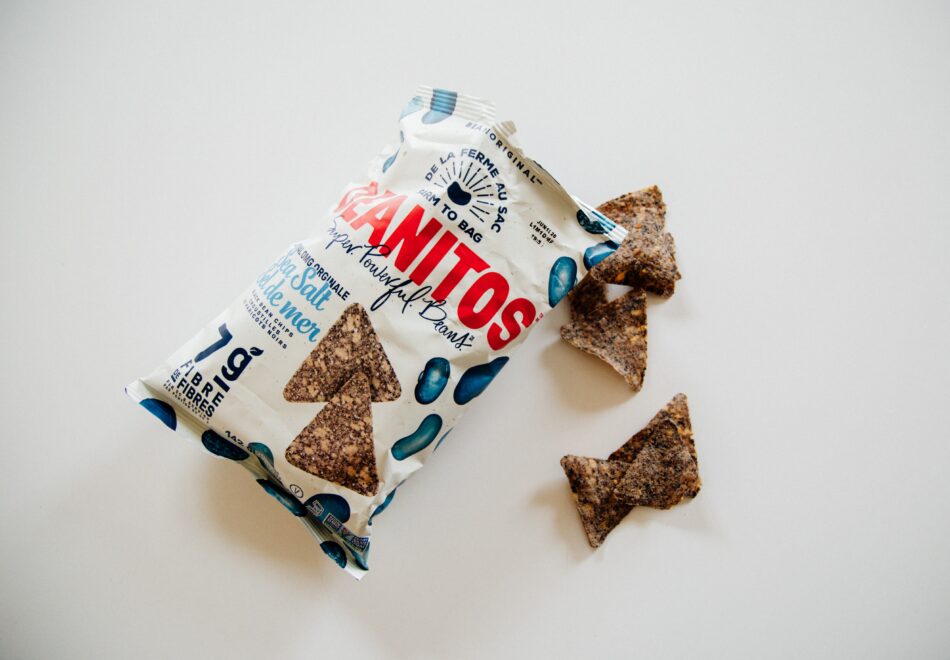Prepare Your Business for New Food Waste Legislation in the UK
From 31 March 2025, most UK businesses must arrange separate food waste collections. Learn and prepare for the new food waste legislation in the UK.

Recycling crisp packets has always been tricky but there are now schemes in place to make it easier than ever. As crisps are often the staple of any lunchbox, snack, or party, you can imagine how many empty crisp packets we get left with in the world. That’s why developing solutions for crisp packet recycling has been so important.
Despite the technology being available to recycle crisp packets, until very recently it wasn’t considered cost-effective enough. This resulted in thousands posting empty packets back to the manufacturers in protest. Now, there are more collection points available to make recycling crisp packets a lot easier. Learn how to recycle crisp packets properly in this guide.
Most crisp packets are made of a type of plastic. Even the seemingly foil interior of crisp packets is actually made of a metallised plastic film. While this helps keep the crisps fresh and extend their shelf life, it’s not a type of plastic you can recycle alongside other household plastics.
There are other forms of crisp packets such as Pringles tubes that are made of a mixture of materials. This includes a cardboard tube, foil inside, metal base, and plastic lid. These materials are recyclable by themselves but combined they’re difficult to recycle.
Yes, technically crisp packets are recyclable. However, because they’re made of plastic and metallised plastic film (the silvery inside layer), they’re too difficult for home recycling collections to deal with – most will reject crisp packets. You can recycle crisp packets alongside plastic bags at some supermarkets and as part of the TerraCycle crisp packet recycling scheme.
Instead of throwing your crisp packets away with your household or business’ general waste, make the effort to recycle crisp packets. Check whether your local supermarkets have recycling bins that accept crisp packets or find a nearby TerraCycle drop-off point.
The TerraCycle recycling scheme is the UK’s largest crisp packet recycling scheme, brought to you by Walkers Crisps. They offer free and easy recycling of your used crisp packets and accept all brands. There are more than 1,600 public drop-off sites nationwide – including a site within four miles of 80% of households in the UK!
Consumers simply drop off any empty crisp packets in the TerraCycle collection boxes, then they’re transported to a relevant facility for recycling. It means no used crisp packets should go to landfill.
Simply take your empty crisp packets to a drop-off location near you – whether individual, multipack, or sharing size bags. They also accept empty nuts packets. Pop them in the box, then they’ll be transported for recycling, rather than ending up in landfill or incineration.
You can even set up your own public drop-off location if you want to make more of a positive difference. You’ll need permission from whoever administers the site, and you’ll need to choose somewhere accessible to the community. The minimum collection for drop-off points is 1,600 packets every six months.
The TerraCycle scheme accepts all crisp packets and even the multipack outer packaging. However, don’t fold the crisp packets into triangles, just leave them loose and as they are. Make sure the packets are completely empty of any bits of food waste and then drop them off at your nearest collection point.
Once your local drop-off point has enough crisp packets (usually anything above 8kg or 1,600 packets), they’ll be shipped to a TerraCycle Material Recovery Facility. At this facility there are a few stages of crisp packet recycling:
These crisp packets may go on to become any number of things in their recycling journey. Some end up as plastic shipping pallets, storage containers and bins, flooring tiles, watering cans for gardens, outdoor furniture and decking, athletic fields, and even playground surface covers. The possibilities are endless when you recycle crisp packets.
The plastic that goes into making crisp packets is incredibly durable. This means the thousands of packets that make their way to the sea can last for over 30 years. These damage natural habitats and harm wildlife – as ocean creatures ingest tiny microplastics as they break down.
Throwing crisp packets in with general waste results in them ending up in landfill or being incinerated. In landfill they toxic chemicals from the plastics used to make crisp packets can leach into the ground and nearby water, causing contamination. Incineration releases greenhouse gases that contribute to global warming and pollution.
A few facts about crisp packets and recycling are that:
The easiest way to reduce the amount of crisp packet waste you produce is to cut down how many crisps you buy. Turn to healthier alternatives that come in recyclable packaging or no packaging at all. Loose fruit and veg are a great idea.
Alternatively, switch from multipack and individual bags of crisps to sharing sizes instead, and limit how much you eat in one go. You could even try making your own homemade crisps to avoid packaging. However, if these aren’t practical then simply recycling crisp packets when you’ve crunched through them will help protect our planet.
Find out more about other rubbish streams.
Get a fast FREE quote for your crisp packet waste
From 31 March 2025, most UK businesses must arrange separate food waste collections. Learn and prepare for the new food waste legislation in the UK.
The study participants included business owners and company employees, revealing unexpected findings about corporate environmental practices.